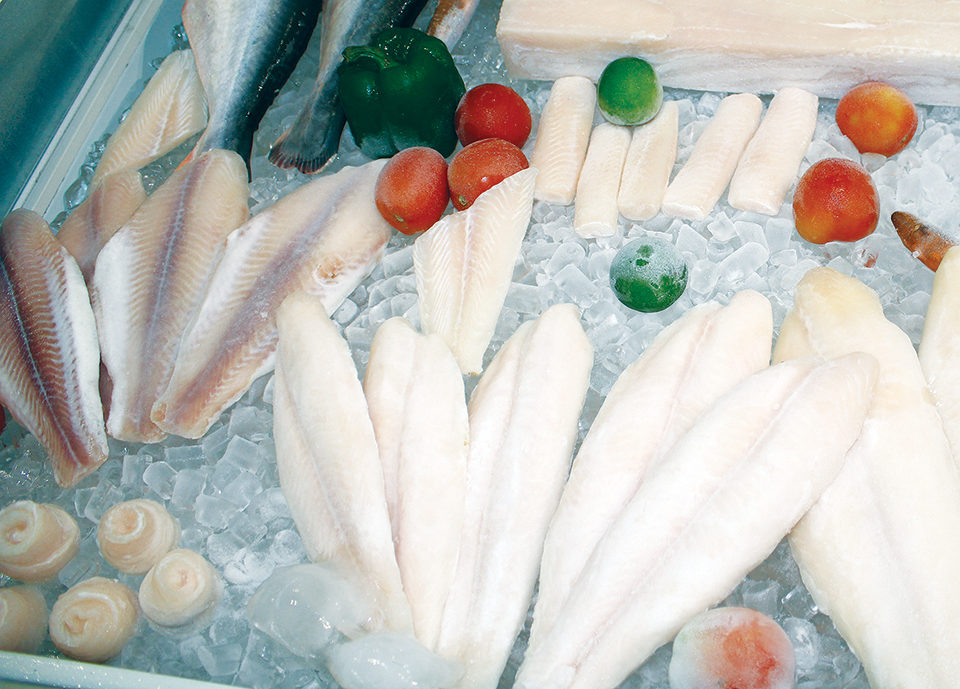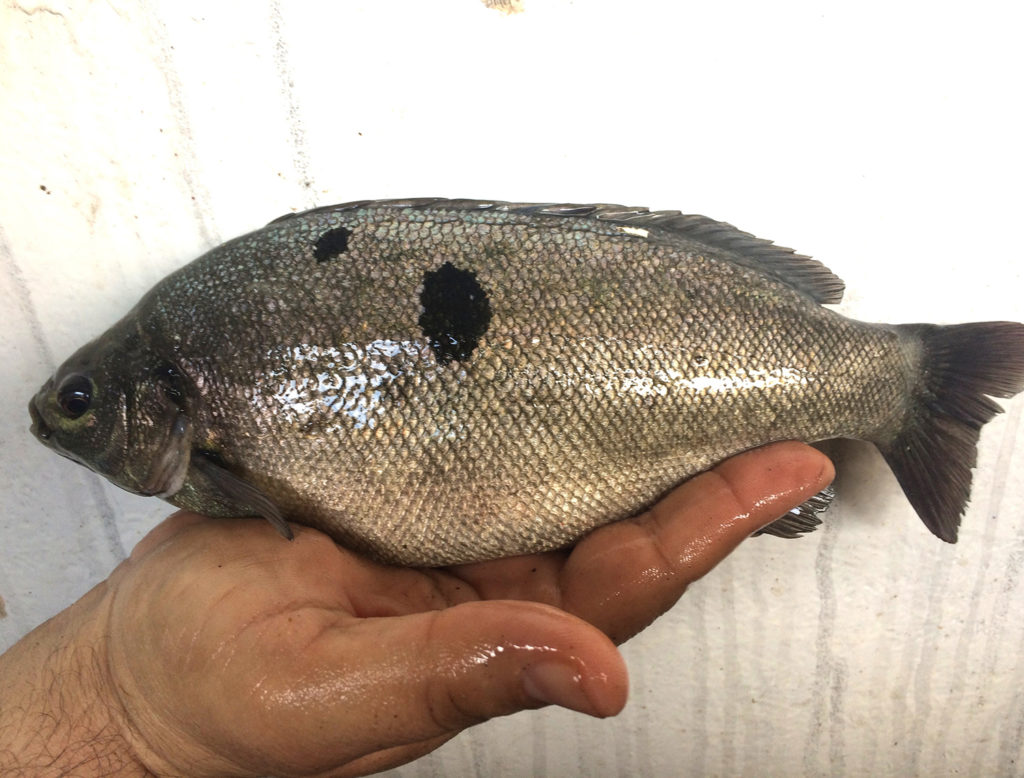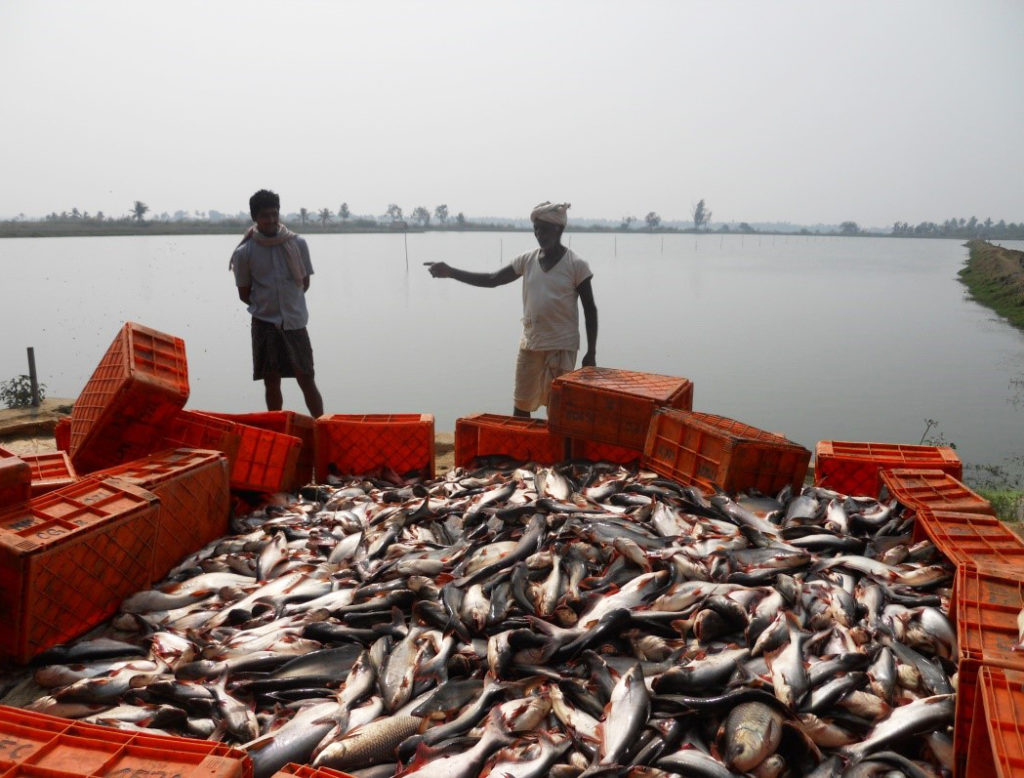Tilapia, pangasius involved in a competitive framework

Tropical freshwater fish have become one of the most important aquaculture commodities in the first decade of the century. Production has significantly grown in developing countries, resulting in a surplus that requires targeting the markets in developed countries in the search of higher prices and profits. The real figures of this trade are difficult, if not impossible, to estimate, as their recordings were aggregated into those of more generic commodities.
However, since 2010, new items have been introduced on the list of tariff codes, and the most relevant tropical species are now differentiated, allowing study at the species level. It is too soon for a long-tern analysis, but the evolution in these three years points to an interesting competitive scenario.
Freshwater fish marketed in E.U.
Three main species of tropical fish are marketed in significant volumes in the European Union, with frozen fillets the most common presentation. Pangasius, Nile perch and tilapia are the top species, according to the volumes imported in 2013 (Fig. 1). Imported volumes of pangasius and Nile perch declined by 30 percent in the last three years, while those of tilapia remained stable and even increased slightly to about 20,000 metric tons (MT).
There is a sort of specialization by continents and countries in the origins of these commodities. Vietnam, where the bulk of pangasius production is located, monopolizes that market. It is the only country with regular monthly supply and faces only occasional minor competition from Chinese imports, which have a marginal market share below 0.5 percent. The average price for a kilogram of frozen pangasius fillets was 1.76 euros ($2.39) in 2013.
Nile perch production is mainly located in Africa. Tanzania leads the exports to the E.U. in quantities and prices, followed by Uganda and Kenya (Table 1).
Tilapia imports are dominated by China and other Asian countries with minor market shares (Table 1). Vietnam started to become a regular actor in the market of this species in 2011, with a break in the following year but consolidation of a 5 percent market share in 2013. Differences in the levels of quality and processing also result in differences in the prices of frozen tilapia fillets across exporting countries.
Polanco, Frozen fillets of tropical freshwater fish, Table 1
| Country | Imports (mt) Nile Perch | Market Share Nile Perch | Price (euro/kg) Nile Perch |
|---|---|---|---|
| Tanzania | 4,384 | 62.8% | 3.38 |
| Uganda | 1,974 | 28.3% | 3.45 |
| Kenya | 620 | 8.9% | 3.50 |
| Imports (mt) Tilapia | Market Share Tilapia | Price (euro/kg) Tilapia |
|
| China | 16,014 | 83.7% | 2.52 |
| Indonesia | 1,901 | 9.9% | 4.65 |
| Vietnam | 980 | 5.2% | 2.86 |
| Thailand | 215 | 1.2% | 4.90 |
Competition across species, countries
Competition is tested using price integration. This analysis tests relationships across prices of different commodities. Two products are competitors when their prices are correlated. Then, when one of the competitors raises or drops prices, the other will act in the same way to avoid losing sales or profits. The conclusion is that one of the products is causing the prices of its competitor.
The above rationale was used to test for competition across producers of the same or different tropical species in the E.U. market. Available data covers only from 2010 to 2013, so only short-term effects could be tested at this time.
Frozen fillets
Competition across species gains in power in the case of frozen fish fillets. Although fillets of some species like cod are well differentiated in Europe, the majority of white fish fillets – even those properly identified as different species – operate in an undifferentiated market. This means they can be direct substitutes, and only differences in the price of the species may make the distinctions among them.
Nile perch producers do not appear to be directly competing, since causality across the prices of imports coming from Uganda, Tanzania and Kenya can be rejected. However, this is not the case for tilapia imports, where prices for the fish from China, Indonesia and Thailand have been found to be correlated (Table 2). With tilapia, China’s prices are not affected by any competitor, and the country exerts the role of price leader. The prices of tilapia imported from Indonesia are caused by the prices for tilapia from Thailand. And Thailand is affected both by China and Indonesia.
Polanco, Causality tests for tilapia exporters, Table 2
| China | Indonesia | Thailand |
|---|
China | Indonesia | Thailand | |
|---|---|---|---|
| China | 0.138 | 0.181 | 0.321 |
| Indonesia | 0.111 | 0.182 | 0.047* |
| Thailand | 0.008*** | 0.005*** | 0.006*** |
Pangasius versus tilapia
Let’s now consider the case of pangasius competing with tilapia. The best combination is given when China, Thailand and Vietnam are put together in the same model. In this case, Thailand and China are exporting tilapia, while Vietnam exports primarily pangasius. The results of the causality analysis can be seen in Table 3.
Polanco, Causality tests for tilapia and Pangasius exporters, Table 3
| China | Thailand | Vietnam |
|---|
China | Thailand | Vietnam | |
|---|---|---|---|
| China | 0.058* | 0.044** | 0.064* |
| Thailand | 0.041** | 0.073* | 0.067* |
| Vietnam | 0.113 | 0.181 | 0.034*** |
The relations observed for tilapia exporters are confirmed, with the variation of low causality from Thailand on China as a result of the inclusion of the prices of Vietnamese pangasius. The prices of pangasius cause the prices of tilapia exports from China and Thailand, but none of these exerts any influence on the Vietnamese prices.
Perspectives
With the exception of Nile perch, which needs to be assessed over a longer period to confirm the lack of competition, the other two tropical species are involved in a competitive framework. Chinese tilapia exports are influencing the prices for products from Indonesia and Thailand, but are not affected by them.
The Chinese leadership in the tilapia market is put in question when pangasius is taken into account, and a low but significant impact of Thai prices on Chinese tilapia appears. The results of this second analysis confirm that pangasius prices affect those of tilapia, and are not affected by them. This situation may help explain why pangasius is the most popular tropical fish in the European Union and the low market shares of tilapia, with less competitive prices.
(Editor’s Note: This article was originally published in the July/August 2014 print edition of the Global Aquaculture Advocate.)
Now that you've reached the end of the article ...
… please consider supporting GSA’s mission to advance responsible seafood practices through education, advocacy and third-party assurances. The Advocate aims to document the evolution of responsible seafood practices and share the expansive knowledge of our vast network of contributors.
By becoming a Global Seafood Alliance member, you’re ensuring that all of the pre-competitive work we do through member benefits, resources and events can continue. Individual membership costs just $50 a year.
Not a GSA member? Join us.
Authors
-

José Fernández Polanco, Ph.D.
Universidad de Cantabria
Avenida de los Castros s/n E-3900
Santander, Cantabria, Spain -
Ignacio Llorente, Ph.D.
María Odriozola
Universidad de Cantabria
Avenida de los Castros s/n E-3900
Santander, Cantabria, Spain
Related Posts

Health & Welfare
Pangasius culture in Western Hemisphere
Western nations consume considerable quantities of pangasius, yet its aquaculture in tropical regions of the hemisphere has not followed. Several countries have approved pangasius aquaculture, and to date no negative environmental impacts have been observed.

Intelligence
A motive, and a market, for farmed fish in Mexico
Boasting ample areas for aquaculture and a robust domestic demand for seafood – not to mention its close proximity to the U.S. market – a land of opportunity lies in Mexico. Fish farming is primed to meet its potential south of the border.

Intelligence
Are omega-3s in farmed jade perch as high as believed?
Farmed jade perch – similar to other cultured fish species – is only rich in omega-3 fatty acids if its diet consists of these nutrients in high amounts. How does it compare to the wild fish?

Intelligence
Pangasius aquaculture growing in India
India has strengthened its role as a supplier of seafood to major global markets. Pangasius will continue to be an important contributor to the country’s growing aquaculture production.



